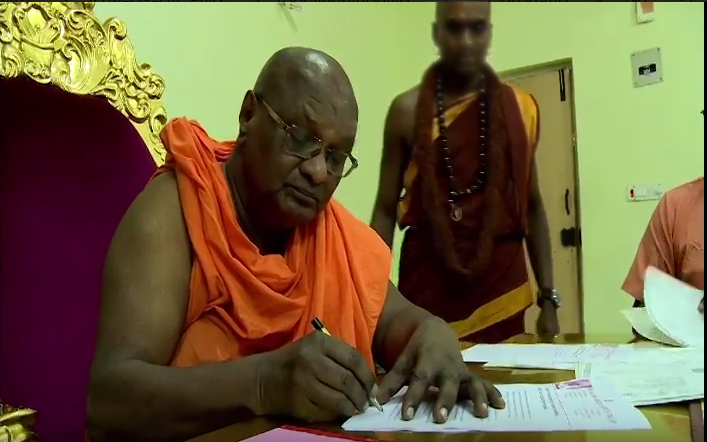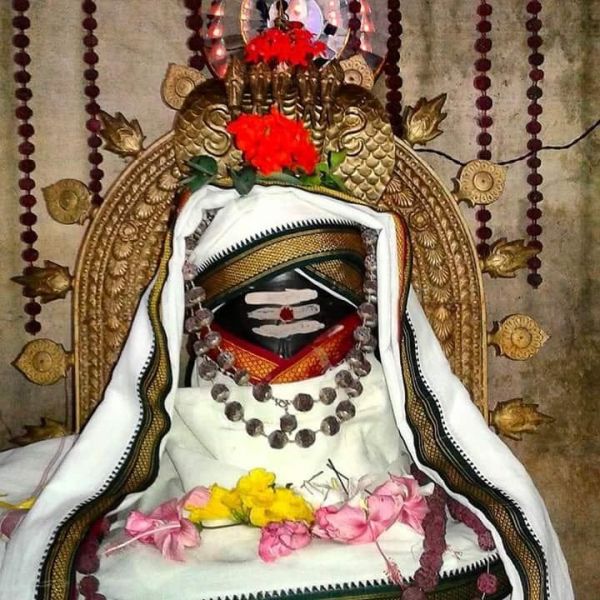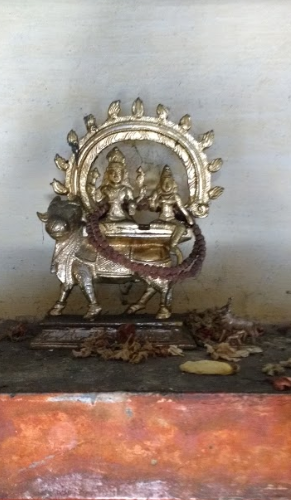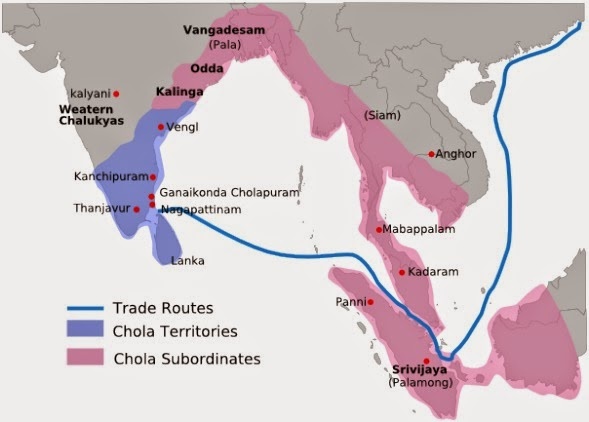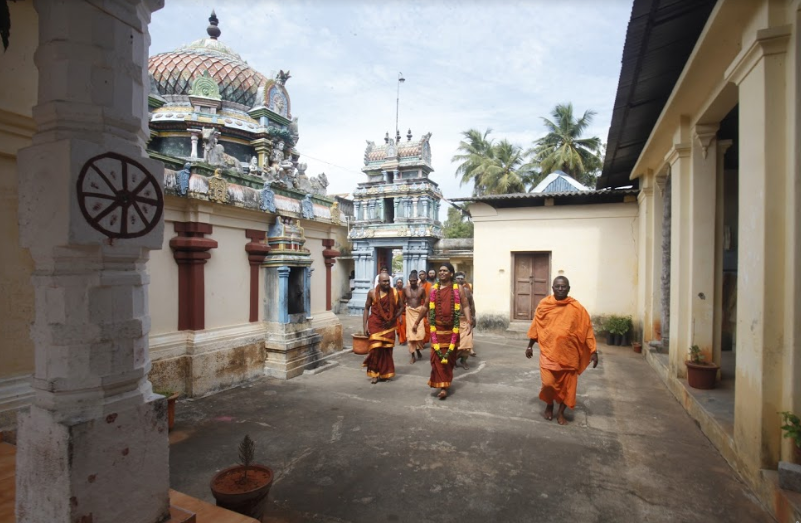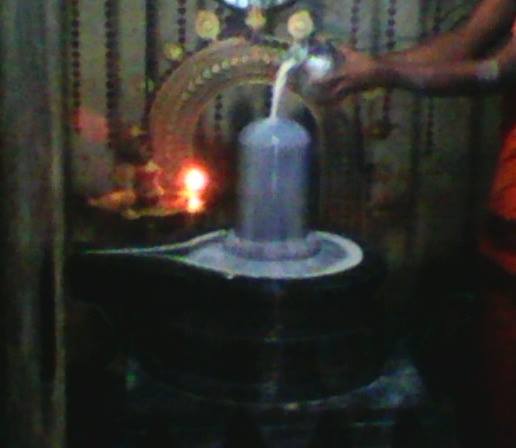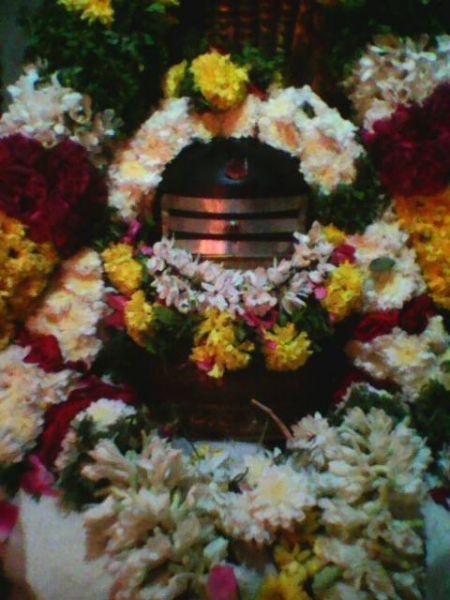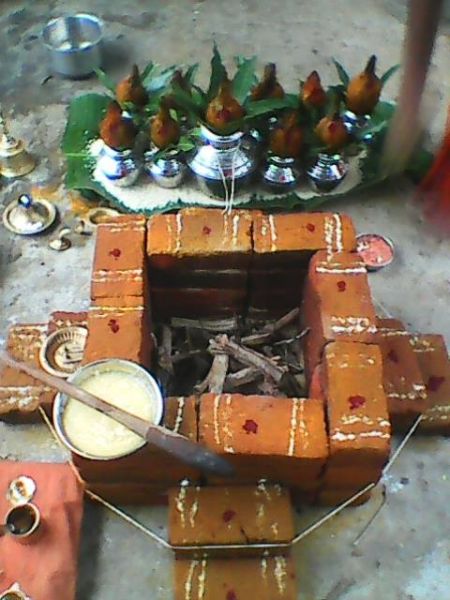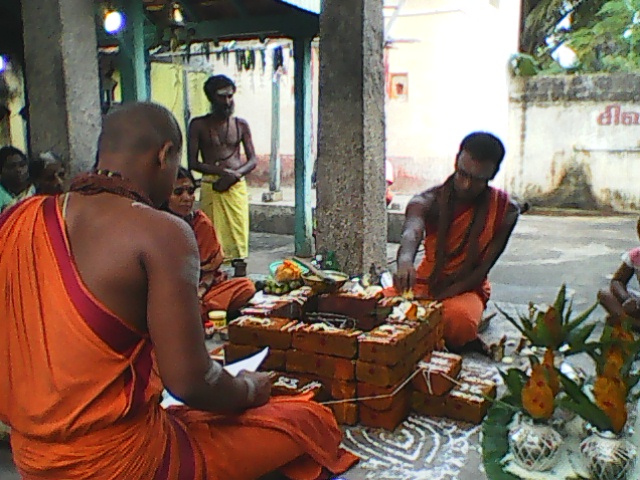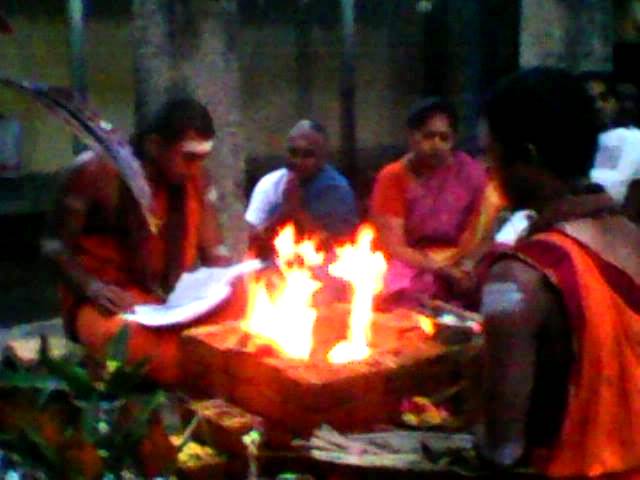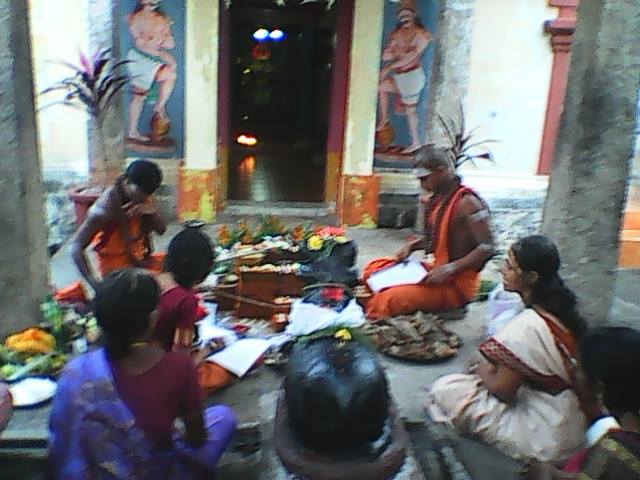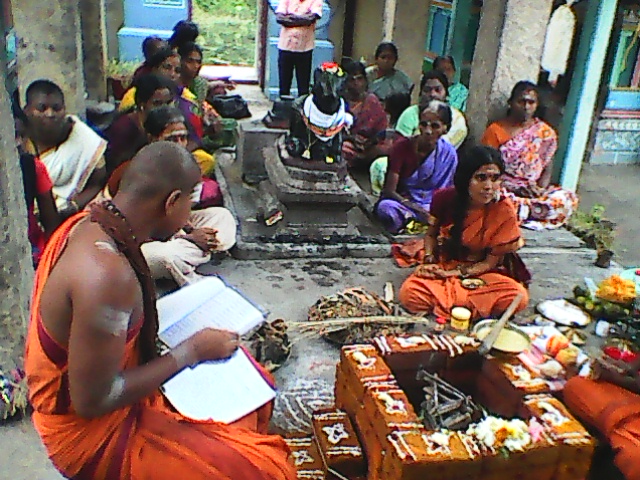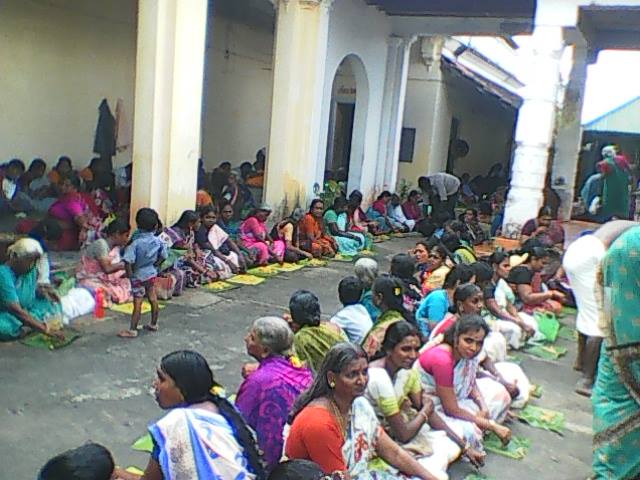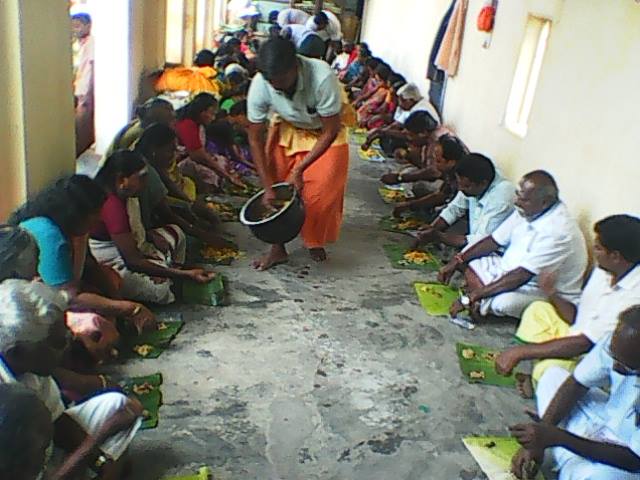Kailasa Paramparagatha Sūrya Vamsa Adi Chola Samrajya Kamala Peetha Sarvajnapeetham
The Ancient Kingdom of the Cholas in South India (Tiruvarur)
The Kailasa Paramparagatha Sūrya Vamsa Adi Chola Samrajya Kamala Peetha Sarvajnapeetham is located in the South of India, in the State of Tamil Nadu.
History
The sacred history and divinity of the Kailasa Paramparagatha Sūrya Vamsa Adi Chola Samrajya Kamala Peetha Sarvajnapeetham (religious kingdom) ruling from the Tiruvarur Aadheenam (temple-monastery), is recorded in the scriptures.
The Tiruvarur Aadheenam (temple-monastery) is located in the Tiruvarur region of South India with its ancient Sri Somanatha temple. The Somanatha Swami temple is a 1000 year old Hindu Śiva temple. The contemporary history of the Somanatha Swami temple dates back to the time of the Medieval Cholas (1012-1044 CE).
About Tiruvarur
Tiruvarur is one of the earliest enlightenment ecosystems established by Paramasiva Himself when he sat here as Lord Tyagarajan. It has an unsurpassed continuity of living tradition and spiritual energy.
The presence of rare, ancient musical instruments, inscriptions copper plate inscriptions, artistic bronze and stone sculptures, the dated historical antiquity of the temple car, and the unbroken tradition and power of the temple as a sacred and historical site makes the Tyagaraja Swami temple at Tiruvarur the largest repository of Tamil cultural values and traditions. Tiruvarur has inspired and fostered creative genius over the centuries.
Regent Kings
This temple is the home of the legendary Chola Empire King Manu Neethi Cholan who followed the path of Sage Manu (Son of Surya – the Sun God who codified the Cosmic Principles into ruling laws of a Hindu Kingdom) and dealt even-handed justice according to the Code of Manu. In his palace, there was a Bell of Justice which was rung only in case of injustice done to man or animal. It is said that one day a cow came to the palace and rung the bell. On enquiry, the king learnt that his own son had trampled and killed her calf under his chariot wheels. Immediately, the king himself drove his chariot over his son and crushed him to death at the very spot where the calf was killed. At once Lord Paramasiva appeared before him and bestowed His grace on all of them. This incident is recorded in a stone inscription on the north wall of the second circumambulation path of this temple (a.r. 164 of 1894; SII, V, no. 456).
Temples in Tiruvarur
Tyagaraja Swami temple Purana (History)
Paramasiva as Tyagaraja Swami, established Tiruvarur as His royal court.
Three of the shrines at the Tiruvarur temple complex are of great significance. They are the Vanmikanathar and Tyagarajar (both being forms of Paramasiva) shrines and the Kamalaamba shrine.
Vanmikanathar shrine
The primary and the most ancient of the shrines at Tiruvarur temple complex is that of Vanmikanathar, a form of Paramasiva. Vanmikanathar is addressed in the Thevaram hymns of the 7th century CE as Aaruran or Tirumoolattaanamudaiyaar or Putridamkondaar. Today, the Tyagarajar deity is more prominent than Vanmikanathar.
Vanmikanathar is represented as a “prithvi lingam” or an “anthill” (prithvi meaning earth element and lingam meaning the dome shaped representation of Paramasiva).
History:
(Ref: http://www.templenet.com/Tamilnadu/Tiruvarur/vanmika.html)
Lord Vishnu came to possess a great bow that rendered him with great might. Seized with vanity, Vishnu is said to have chased the Gods or the Devas all through the Universe. The frightened Devas fled all over the Universe and finally came to Tiruvarur and offered prayers to Paramasiva requesting him to save them from this plight.
It is said that Vishnu's strength vanished upon his reaching Tiruvarur and he is said to have stood still, resting his head on his bow. The Devas immediately took the form of white ants, built an ant hill at the end of the bow that rested on the ground, gnawed at the bow and cut off its string. The straightening bow struck Vishnu with much force and cut off his head.
Totally dismayed at the loss of the protector of the Universe, the Devas prayed again to Shiva. Paramasiva appeared immediately and restored Vishnu to life, and upon the request of the Devas took up abode within the anthill, and is now enshrined within the anthill, as Vanmikanathar in the main shrine of the Tiruvarur temple complex.
The Aatakeswaram shrine in the Tiruvarur temple, is believed to be the shrine from wherein Paramasiva appeared here in the main shrine, in the anthill. Therefore the anthill form of worship happens here.
In the main shrine dedicated to Vanmikanathar, there is an image of Bhoga Shakti (Piriyaa Vidai Amman) representing Paramasiva's consort. This image is permanently housed in the main shrine itself, and is also referred to as Padi Taandaa Pattini.
The Tyagaraja Swami shrine
In this temple, Paramasiva sits as Tyagesha or Tyagaraja Swami in his Durbar (Royal Seat), like a king with his queen, and between them, their son Skanda (Subramanya or Muruga) dances. This setup of Paramasiva, Parvati and Skanda is called Somaskanda and is a rare sight for the devotee.
The deity of Tyagaraja at Tiruvarur is said to have been held in worship by Lord Vishnu, and later by Indra the King of the Gods and then later on by Muchukunda Chakravartia, the valorous king.
The Tyagaraja shrine at Tiruvarur is associated with the Ajapaa Natanam dance (dance without music) which is enacted every time the deity is taken out in procession.
The name Tyagaraja became associated with Somaskanda only from the 16th century onward (the earliest references to Somaskanda as Tyagaraja go back to the 12th century CE). Until that point in time, this deity was referred to as Veedhi Vitankar (meaning procession deity) in Tamil and Aaruradipati in Sanskrit.
The Nandi (sacred bull vehicle of Lord Paramasiva and therefore Tyagaraja) in front of the Tyagaraja shrine is portrayed in a standing posture, whereas it is usually sitting in other temples.
Abhishekam (oblations) rituals are performed to this deity only six times a year, and even during these occasions the entire deity is kept covered with a piece of cloth, barring the faces. On a daily basis, abhishekams are performed to an emerald Shiva lingam placed in the shrine.
This is a vital center of the Tantric Sri Chakra spiritual energy. The Sri Chakra is a 2-dimensional representative geometric form of the Cosmos carrying high energy. The Sri Chakra is etched on a plate on the Tyagaraja deity.
Neelotpalaambaal Shrine
The Neelotpalaambaal (Consort of Vanmikanathar) or Alliyankodai shrine (as referred to in the Tevaram hymns) is enshrined within the inner precincts of the temple.
Kamalamba shrine
Goddess Kamalamba the Consort of Tyagaraja Swami, is enshrined in a grand shrine in the outer prakaram (circumambulation path). The Tiruvarur Devi, Kamalambal, is the yogini. She is the tantric focus of spiritual power. Her shrine inside the temple complex of Tiruvarur faces North, the direction of KAILASA (abode of Paramasiva), symbolizing release from the cycle of birth and death. She sits cross-legged in virginal purity. Muthuswami Dikshatar, a tantric initiate, and a genius Sanskrit composer of inordinate logical methodology and incomparable creativity recalls Sri Vidya Tantrism and powers of Kamalamba as the Yogini Deity in his exquisitely rendered compositions “Kamalamba Navaratna Kritis”. The Kamalamba shrine is regarded with great veneration and it has its own cycle of annual festivals.
The Kamalalayam Lotus tank
The Kamalalaya water tank named after this tantric deity, Kamalamba, outside the western gate of the temple covers over 16 acres and is one of the largest in the country.
By SriniG - Own work, CC BY-SA 3.0, https://commons.wikimedia.org/w/index.php?curid=11156173
Maintaining a tradition unbroken for over two thousand years, theppam, a joyous float festival in its water on a full moon January day is celebrated in this tank. A large raft with musicians singing praises of the lord is floated on the Kamalalayam.
The Tiruvarur Ther festival
The Ther (Temple car or chariot) https://en.wikipedia.org/wiki/Tiruvarur_Chariot_festival
The Tiruvarur Chariot festival is a historical event that still follows the same rituals and traditions associated with the Thyagaraja Swamy temple, Tiruvarur, in Tamil Nadu. The Lord Veethividangar now called as Tyagaraja Swami (a form of Paramasiva) comes out of the massive ancient temple, with His consort Kondi (a form of Devi Parvati) to bless the devotees. This chariot is the largest in Asia. It was constructed by Vishwakarma (celestial builders) community.
This is one of the very old and ancient festivals that are often mentioned in the devotional hymns of saints like Appar,Tiru Jnanasambandar and Sundarar and in many other Tamil literature. This festival is held in March-April every year and lasts more than 25 days. On the day of the chariot procession, the Utsava moorti (the Lord who comes out for procession) is beautifully decorated and brought out of the temple along with his consort and they go for the procession all day long.
The chariot is 96 feet (29 m) tall and weighs more than 300 tons with intricate wood carvings. Apart from this grand chariot there are 4 more temple cars: for the Lord's consort, for Subramanya, Ganesha and Chandikeswara respectively. All the chariots are large, but relatively smaller than the main chariot. It requires a minimum of ten thousand people to pull the chariot around the four surrounding streets of the temple.
Arulmigu Subramanya Swami temple Enkan
(left) Arulmighu Subramanya Swami temple in Tiruvarur By Ssriram mt - Own work, CC BY-SA 4.0,
https://commons.wikimedia.org/w/index.php?curid=34154684
(right) The main deity of Lord Muruga with His two Divine Consorts Valli and Deivanai http://www.kudamookku.com/aroundthecity/enkan.htm
Arulmighu Subramanya Swami temple (also called Enkan Murugan Temple) is a temple dedicated to the Hindu God Muruga situated in the village of Enkan in the Tiruvarur District of Tamil Nadu, India. It is a popular tourist destination. Enkan (also Engan) is located 13 kilometres from Tiruvarur.
History: The sculptor who sculpted the deity of Muruga in this temple is the same person who carved the deities at Sikkal and Ettukudi - other Muruga temples in this enlightenment ecosystem. Upon sculpting the deity at Sikkal, the sculptor cut his right thumb so as to ensure that he would not create anything anywhere which would surpass the beauty of the image at Sikkal. After sculpting deity idol at Ethukudi, he, however, found the idol excelling the one at Sikkal in beauty and hence blinded himself as punishment. Hence while sculpting the deity of Murugan at Engan, the sculptor had to rely on the assistance of a woman as he was blind himself. By mistake, while sculpting, he cut a finger belonging to the woman and blood began to ooze. These droplets of blood fell on his eyes curing him of his blindness. Once the sculptor realised that he could now see, he exclaimed in amazement "Engan! Engan!" meaning "My eyes" in the Tamil language.
This temple is very famous and King Raja raja Cholan created a permanent endowment for the requirements of the daily poojas and festivals
Thaipoosam festival
https://en.wikipedia.org/wiki/Thaipusam The word Thaipoosam is a combination of the name of the Vedic month, Thai (Jan-Feb), and the name of the Vedic star Poosam. This particular star is at its highest point during this festival. The festival commemorates the occasion when Parvati (Divine Consort of Paramsiva) gave Lord Muruga (Her own son) a Vel "spear" so he could vanquish the evil demon Soorapadman. The demons symbolize the negativity in us and the slaying of them is the slaying of collective negativity. In the ongoing battle between Soorapadman and the Devas (Divine beings), at one point in time, the latter were defeated several times. In despair, they approached Paramasiva and requested Him to give them an able leader under whose leadership they would gain victory over Soorapadman. Paramasiva granted their request by creating the mighty warrior, Skanda (His own son also called Muruga or Subramanya), out of His Third Eye (The energy center between the eyebrows). Skanda at once assumed leadership of the celestial forces, inspired them and defeated Soorapadman. His victory is celebrated as the Thaipoosam festival.
Kavadi Attam and body piercing
Devotees carry kavadi (top let), pierce their bodies (top right) and carry Pal Kodam (milk pot offerings) to show their devotion to Lord Muruga
The Kavadi Attam is the ceremonial sacrifice (a dance that helps to maintain a healthy body) and offering performed by devotees during the worship of Lord Muruga. It is performed during the festival of Thaipoosam. The Kavadi is a semicircular decorated canopy supported by a wooden rod that is carried on the shoulders to the temple. Devotees prepare for bearing the kavadi by observing a fast for 48 days, keeping their body always clean, offering regular prayers and following a vegetarian diet before the Thaipoosam festival. Kavadi-bearers perform elaborate ceremonies at the time of assuming the Kavadi and at the time of offering it to Lord Muruga. The kavadi-bearer observes celibacy and consumes only certain types of satvic food items and continuously meditates on God. This tradition makes them physically and mentally healthy. During this festival, many carry a Pal Kodam (pot of milk) to offer to Lord Muruga and many pierce their skin, tongue or cheeks with spears or tridents to show their devotion and respect to Lord Muruga.
Mahamariamman temple
History: In a street named Valangaiman Varadharajanpettai, about 200 years ago there lived a farmer named Kathagounder. He and his wife Govindammal were both devotees of God. His wife prepared eatables and sold them for a living in the nearby villages especially Pungancheri South East of Valangaiman.
One Friday, Govindammal went to Pungancheri for her business. She sold her eatables and got a lot of money and paddy in return for it. She went to a water tank to have a bath, and there she saw a brahmin (community) couple with their child going towards the Adaikkalam Katha Ayyanar Temple. Govindammal suddenly heard the cry of a child from the side of the Ayyanar temple. She hurried to the spot and found a girl child was crying there. She called the neighbours and the people on the streets and looking for the child’s parents but there was nobody. Govindammal took the crying child and the child immediately started laughing. The people of the street were attracted by beauty of the child and wanted to bring up the child themselves. Finally the people decided that the leader of the street (Nattamai) should bring up the child. Govindammal felt sorry that she did not get the child. She returned to her house and for three days she didn't go to Pungancheri for sales.
In Pungancheri, all of a sudden, fowls, sheep and cattle died and many people suffered with smallpox. The child from the Ayyanar temple was also infected with smallpox. There was confusion everywhere. A furious man said that the child should be given to Govindammal and said that only then the village would become well.
Immediately they called Govindammal and gave the child to her. Govindammal got the child, named her as 'Sithala' and began to bring her up. But on the 3rd day, due to acute smallpox, the child passed away. Govindammal and her husband with sorrowful hearts performed the funeral at the back of their house.
People bathing in the Kudamurutti river, would cross the backyard of Govindammal’s house and word spread that it was Mariamman (a name for the Universal Cosmic Mother) who came to the house of Govindammal in the form of the child, and they immediately built a Sithala Devi Mahamariamman temple there and considered the Goddess as Mother Parasakthi – the Universal Cosmic Mother. This is the historical background of the Valangaiman Mahamariamman temple.
In India this is the only separate temple for Goddess Sithala Devi called as "Padaikatti Mariamman" who protected the people from smallpox and many other diseases. This Goddess Padaikatti Mariamman has a supreme power that she radiates to her Devotees. Devotees here follow a strange custom of prayer commitment by doing a ritual with Paadai – a structure generally used for carrying a dead body.
The Paadai festival is celebrated in the Vedic month of Panguni (March-April). Sick people pray to this Devi that they would offer the Paadai Kavadi to her after recovery from illness. The patient after recovery will then lie on this Paadai as a dead person accompanied by the son and wife. The patient will be brought to the temple. The priest would sprinkle the sacred water from the temple on the body. And the person would wake up as if from death by the grace of the Devi. The belief is that She would not let her devotee die.
Every year in the days of this month, the Paadaikatti festival attracts lakhs of people from all over the country and they get a turning point in their life. During the Vedic months of Avani (Aug-Sep) and Panguni (Sep-Oct) 10-day festivals are celebrated in this temple for the Devi.
Maha Saraswati Amman temple
(https://en.wikipedia.org/wiki/Koothanur_Maha_Saraswathi_Temple)
Goddess Saraswati is the Goddess of learning. Koothanur Maha Saraswathi Temple is located in the town of Koothanur in the Tiruvarur district of Tamil Nadu, India dedicated to Goddess Saraswati. Here the Navaratri festival is celebrated in a grand fashion.
Navarati festival
One of the most sacred and divine nights of worship of the primordial Mother Adi Shakti (Universal Cosmic Mother) is the Navaratri or “nine nights”. The Goddess is worshipped in her multiple forms and grants ultimate blessings to her devotees destroying the negativity in them during this period. This festival celebrates the victory of good over evil and wakes up one from the deep slumber of ignorance, clearing all the surrounding negative energies, purifying the mind and adopting positive attitude or virtues in life. This transformation helps one gain spiritual knowledge and achieve enlightenment.
The nine nights invoke the various powerful forms of Adi Shakti namely Durga, Lakshmi and Saraswati who stand for power, wealth and knowledge respectively. The ninth day is dedicated to Goddess Saraswati. A special Saraswati puja (ritualistic worship) is performed to her this day. All one’s books of learning, equipment and tools of usage are brought out and offered to Goddess Saraswati on this day for blessings. In the northern parts of India, Navaratri concludes with Dussehra on the tenth day and in southern parts with Vijaya Dasami on this day, celebrating the victory of Adi Shakti over evil.
Widespread homas (ritualistic fire offering) and pujas (ritualistic offering) to Adi Shakti are performed during this period.
The Regent Kings, the Royal Patronage and aggrandizements
The Pallava Kings
In the 5-7th century, as the Pallava monarchs sponsored research and refined the art of temple architecture as we know it today. They evolved the first traces of Somaskanda (a particular form of representation of Paramasiva with His consort Parvati, and Skanda (Muruga or Subramanya) sitting between them as seen in picture) in bronze, for the Utsavam (processions). The Somaskanda is one of the Lilamurthis, a form adopted by Paramasiva for divine sport on Planet Earth. Paramasiva performed 364 such leelas (incidents as Divine plays) in and around Tiruvarur.
These temples were originally bricks and mortar structures with a lot of woodwork. Mahendra Pallava (a sculpture of whom can be seen in the picture in the center) patronized this temple and added many features, notably, the shrine of the Sapta Matrikas (the Seven Mothers), Ganesha, Maheshwara, and Durga in the outer prahara (second perimeter around the temple) and the Yama Chandikeshwarar in the inner perimeter (first prahara).
The Chola Kings
The transition of the tradition between one dynasty and another is seamless as the Chola Kings adopted, refined and popularized the Somaskanda iconography in bronze.
Later, from the 9th and 10th centuries A.D. the imperial Cholas undertook a project of immense magnitude wherein they set about revamping all the major South Indian spiritual centers, temples, using the more durable medium, granite.
The Tiruvarur Tyagaraja Swami temple was first rebuilt as a granite structure by the Chola king, Aditya I (seen in picture). Aditya Chola I was the son of Vijayalaya Chola who resurrected the Chola line in the 7th-8th Centuries AD. He is credited to have created 64 Paramasiva shrines along the Cauvery from Madikeri to the Bay of Bengal. Aditya I had developed a unique, signature architectural style well recognized today as that developed under his patronage. At Tiruvarur, the Tyagaraja Swami temple has several elements that are evident in this style: The temple’s Peetam, Upa Peetam, Goshtam (an elevated platform on the wall), and the shape and style of the Vimana (Temple tower).
The well respected and famous Chola Queen-Grandmother Sembian Mahadevi (wife of Gandaraditya Chola) inspired King Rajaraja Chola I (seen in picture) to revamp all temples built with brick, mortar, and wood into permanent granite structures. A Rajaraja Chola I inscription states that Queen Sembian Mahadevi personally supervised the conversion of the main sanctum sanctorum and Ardha mandapam (hall just outside the main sanctum) of the Araneri temple inside the Tyagraja Swami temple complex. Such personal interest, involvement and patronage of the Royals in matters of religious and spiritual importance is well documented.
(left) The three Carnatic Saints Tyagarajar (middle), Muthuswami Dikshatar (right) and Shyama Shastri (left)
The famous Tyagaraja Aradhana festival
The Chola king Rajendra I, son of Rajaraja, also known as Madurantaka II after his Grand Uncle, rebuilt the existing Tiruvarur Tyagaraja shrine in stone at the behest of his mistress Paravai. He is also credited with upgrading some of the surrounding mandapas (pillared halls). The independent shrine complexes for the two Goddesses of this temple namely Neelothpalambal and Kamalambal, were upgraded by many kings and the art in those chambers reflect several periods. The Mukha mandapam was constructed later.
The eight temple towers or Gopurams
The first striking features of the Tiruvarur Tyagaraja Swami temple to greet the devotee is the architecture of the great entryways, called the Gopurams, at the four cardinal directions. Each of the four exterior perimeter walls of the temple has a large Gopuram with reinforced wooden gates at its center. Of these four Gopurams, the Eastern Gopuram on the outermost perimeter wall called the Raja Gopuram is called the Maha Dwara (the great or main entrance) as per Vaastu Shastra (Science of building to optimize the energy impregnation inside the space of the building) and is the most exquisite.
Built between the 12th and 13th Century by the Cholas, the tall doorway of the Raja Gopuram was a granite structure up to the lintel level. This humongous granite base has several rearing Yali (animal from ancient India) figures, each mounted by a rider. The elegant slender bodies of these horse-like creatures that sport the face of a lion and the delicate relief carving on them are unique to the Chola artisans. These Yalis are animals that lived in ancient India and represent the different stages of life. The six story, tapering superstructure above is constructed with deep red brick and mortar. Each of the six levels is proportionately smaller than the tier below, hollow, and set with proportionate window apertures aligned along the inner and outer facades.
In 1202 A.D., the Chola king Kulothunga Chola III constructed this Raja Gopuram. The historical book “Kulothunga Meykirthi” and the “Tribhuvam” inscription song attest that King Kulothunga III assigned villages in the Pandya and Chera countries to support this temple at Tiruvarur and offered all spoils from the war to the Deity, Tyagaraja Swami, affectionately known as Tyagesha. A lasting sculpture of this warrior benefactor, Kulotunga Chola III with his guru Easwara Shivar, has been sculpted in the second tier of the RajaGopuram.
The Nayak Kings
A Thanjavur Nayaka King, Sevappan, built the Northern Gopura. This Gopura is constructed using granite blocks up to the base level but does not have any sculptures on it. On the second level off this Gopura, there are figurines of this King and the manager of the temple of that time. Sevappan has left some inscriptcarnaticional record on this Gopura.
Successive kingdoms added these grand entryways to the sanctum keeping in mind the overall aesthetics of the temple and have ensured that their contributions have enhanced the breathtaking impact of the entire complex.
The Western Gopura appears to have been constructed with granite blocks and was re-built during the time of Vijayanagara King Devaraya II (1422-1446 A.D.). Tamil and Kannada inscriptions on this Gopura say that a man called Nagarajar built it under the patronage of Dakshina Samudradipathi Lakkana Thanna Nayaka who was a feudal king of the Vijayanagar Empire.
Mandapams
Typically pillared halls with granite slab roofs, mandapams were created as large congregation halls. Tiruvarur, being a very popular and powerful place, necessarily had many such ancillary structures. The mandapams of this temple have all the required components as required by the Agama Shastras.
Rajanarayana Thirumandapam
This artistically designed mandapam has hosted many historical events. Several inscriptions attributed to the Imperial Cholas attest that this was a popular venue to host town council meetings, and conference feudal lords and royalty to discuss national, social, business, and security issues. The Mandapa lent itself to grand occasions and was the preferred location to receive ambassadors from many nations. Of all the royalty that came and went, only the presiding Royal Deity, Thyagarajaswami and his Queen Neelothpalambal continue to hold royal court here during the Panguni Uttiram and Aathirai festivals.
The art in the Rajanarayan Thirumandapam has seen the effort of several generations of artisans under several regimes. Sculptures of lions embellish the pillars supporting the roof. On the ceiling are many beautiful sculptures of women in dance postures.
Art and culture
The town was a traditional centre of music and dance–the inscriptions from Rajaraja Chola associates a large body of dancers associated with the temple.There was large influx of the acumen of South Indian culture into Tiruvarur during the 17th century resulting in developments in music and dance. A unique musical instrument called Panchamuga Vadyam with each of its five ends ornamented differently is used in the temple. A type of nadaswaram (pipe instrument) called Pari Nadaswaram is also a unique instrument found only in Thiruvarur.
Historically Tiruvarur has been a centre of eminent people in religion, arts and science. Inside the Subramanya Swami temple in Tiruvarur, there is an art gallery depicting the greatness of the judicious king Manuneethi Cholan.
The three Carnatic Music Saints and contemporaries - Tyagaraja, Shyama Shastri and Muthuswami Dikshatar were all born in Tiruvarur. This famous trinity of Carnatic music composed enduring devotionally inspired classics here. The Tyagaraja Carnatic Music Festival, in Tiruvariyar is held here in January every year. It attracts legendary singers and large groups of music lovers from all across the country. The festival is to pay homage to Saint Tyagaraja and the songs sung as part of the homage are the “Pancharatna Kritis” or the Five Gems of Carnatic music composed by the Trinity.
April 15 2014 - Swami Atmananda legally declaring The Supreme Pontiff of Hinduism as the Pontiff for the three ancient Mutts (and hence King of the three Kingdoms) in Tiruvarur, Thanjavur and, Panchanadikulam and Vedaranyam, April 15 2014
Glory of Tiruvarur sung by the Poet Saints
Sundarar, an 8th-century Saivite saint, mentions “I am the slave of all those born in Thiruvarur” in his works in Tevaram. Two of the 63 nayanmars of Saivite tradition namely, Kalarsinga Nayanar and Tandiyadigal Nayanar were born in Thiruvarur. The Periyapuranam, a 12th century Saiva canonical by Sekkizhar, dedicates a chapter to those born in Thiruvarur including these two saints.
The Tiruvarur temple complex was extremely well known in the 6th century AD and had well developed, characteristic and esoteric traditions even at that time. A poem of Appar reveals that the temple traditions of Marghazhi Aathirai Vizha, Panguni Uttirai Perunaal, Veedhivitakanin Veedhi Panni, celebrated for Lord Tyagaraja and Neelotpalambal today, existed even before the 6th century A.D.
Poet Saint Appar (also called Tirunavukkarasar), one of the chief Nayanmars who are the 63 enlightened Saints devoted to Paramasiva, sang beautiful compositions on the Tyagaraja Swami temple during King Mahendra Pallava's time in the 6th century AD. In his monumental work, “Thevaram”, Appar lovingly recalls the feats of Paramasiva with his people as the Lord of Tiruvarur. He addresses Paramasiva as Tyagesha, because Paramasiva assumes the name Tyagarajan, the presiding deity of Tiruvarur.
Sekkizhar in his Periyapuranam describes the beauty of the mandapams of this temple in the story of Siruthonda Nayanar. The largest mandapam in the Tyagaraja Swami temple, the Deva Siriyam is one of the famous ancient monuments of Tamil Nadu. By virtue of being the site where the great poet Sundaramurthy Nayanar created his Thiruthonduthogai, its association with this benchmark in the resigious-poetic history of Tamil Shaivism remains unforgotten. As a mandapam, the sheltered open space served as a stage for Koothu, a special form of native theatre of Tamil Nadu that involved music, dance, and drama in an opera style setting and the more classic and codified form of dance, Bharathanatyam.
Foreign invasions and destruction of Tiruvarur
Tiruvarur was captured by French troops led by Lally (1702–66 CE) in 1759 CE. The Tyagarajar temple was ransacked and destroyed for hidden treasure. During the destructive raid, six brahmins of the temple, were killed in an encounter. The province and Tanjore were annexed by British after the failed attempt of the French to attack the King of Tanjore.
With the takeover by the foreign invaders, the enlightenment ecosystem or “KAILASA” established by Paramasiva in this region of Tiruvarur was destroyed and continued to exist only at the soul level. All the social, political, religious, spiritual and economical legitimacy of Sanatana Hindu Dharma was removed and new Westernised systems were established, replacing the age-old traditional systems of KAILASA. The enlightened civilization no long existed.
Revival of KAILASA
Coronation of The Supreme Pontiff of Hinduism His Divine Holiness Bhagavan Nithyananda Paramashivam, to the Kailasa Paramparagatha Sūrya Vamsa Adi Chola Samrajya Kamala Peetha Sarvajnapeetham (Tiruvarur)
On April 15, 2014, Swami Atmananda, the current pontiff of Sri Somanatha Swami temple and Mutt (Aadheenam, temple monastery complex), Tiruvarur, appointed The Supreme Pontiff of Hinduism, Jagatguru Mahasannidhanam, His Divine Holiness Bhagavan Nithyananda Paramashivam as his successor. The temple and mutt come under the Sri Kashi Vishwanathar temple in Thanjavur owned by The Supreme Pontiff of Hinduism.
With the coronation, the revival of KAILASA in Tiruvarur commenced from the soul level.
Video of Coronation of The Supreme Pontiff of Hinduism
Video-Link : https://www.youtube.com/watch?v=GrIzOeBwavc
A few of the earlier Pontiffs
- Sri Shankarananda Swamigal
- Sri Krishnananda Swamigal
- Sri la Sri Sivasubramaniyananda Swamigal
- Sri Atmananda Swamigal
History of the Somanatha Swami temple
The sacred history and divinity of the Thiruvarur Peetham is recorded in its temple scriptures and rules from the Tiruvarur Aadheenam. The Kingdom of Tiruvarur is a religious Kingdom. The Thiruvarur Aadheenam (temple-monastery) is located in the Tiruvarur region of South India with its ancient Sri Somanatha temple.
The deity Somanatha Swami has all along been worshipped to end mental agonies and stress of the devotees who seek His blessings at this temple. This temple is located in South India in the State of Tamil Nadu close to the famous temple of Thyagaraja Swamy at Tiruvarur.
History reveals that Paramaśiva (Primordial Hindu Divinity) and His Divine Consort Devī appeared in physical form in this very location to Lord Chandra (the lunar planet) and blessed him with enlightenment. They then took deity form and remained there, heeding to Lord Chandra’s prayers to be available to bless humanity like they had blessed him.
The deity forms are called Somanatha Swamy and Devī Jnanasiddhi Yogambigai. They are known to remove ignorance and bestow Enlightenment to those who worship them. Till date the devotees coming here are relieved of their mental agony and experience higher spiritual knowledge.
The Aadheenam and temple were later established here by a Guru-disciple lineage. The founder and presiding deity remains Paramaśiva. This region was ruled by the royal Chola Kingdom, the longest ruling dynasty in history, who were the regents of the Pontiff of the mutt. The Pontiffs were in turn the legal heir and direct representative of Paramaśiva in the region.The Somanatha Swami temple is a 1000 year old Hindu Śiva temple. The contemporary history of the Somanatha Swami temple dates back to the time of the Medieval Cholas (1012-1044CE).
Religious and humanitarian services
Coronation
On April 15, 2014, Swami Atmananda, the current pontiff of the Kingdom - Kailasa Paramparagatha Sūrya Vamsa Adi Chola Samrajya Kamala Peetha Sarvajnapeetham - to which belong the Sri Somanatha Swami temple and Mutt (Aadheenam, temple monastery complex) in Tiruvarur, named Bhagavan Sri Nithyananda Paramashivam as his successor. The temple and mutt come under the Sri Kashi Vishwanathar temple in Karanthai, Thanjavur owned by The Supreme Pontiff of Hinduism.
Coronation Deed of The Supreme Pontiff of Hinduism (Tamil)
Coronation Deed (Translated into English)
| Karaikkudi
15.4.14 Pontiff Ordainment Deed On the second day of the Chitrai month, in the year of Jaya, April 15, 2014, I, Sri Atmananda Swamigal, disciple of Sri Chitbhavananda Swamigal, Pontiff of Sri Somanathasamy temple in Vanmeekapuram, Thiruvarur Madappuram, Thiruvarur Taluk, Thiruvarur district, Pontiff of Sri Arunachala Jnanadesika Swamigal Mutt, located in Panchanadhikuam lower Sethi, Vedaranyam Taluk, Nagapattinam district, the head, Pontiff and Treasurer of Sri Po. Ka. Sadhukal temple monastery complex located in Vedaranyam Kaspa North street, Vedaranyam Taluk, Nagapattinam district, Pontiff of both Sri Palsamy mutt and Sri Sankarasamu mutt located in Karuthattankudi north gate, Thanjavur town, Thanjavur district, Ordain Sri Nithyananda Swami, establisher of Nithyananda Dhyanapeetam, who belongs to Tiruvannamalai, who is proficient in Vedanta, known to me for a long time, and who is close to me, my disciple, who has my trust and confidence, an Avatara Purusha, Mahāmanḍaleśvar of Mahanirvani Akhada, worshipped as a Divine Incarnation by millions, as the pontiff of Thiruvarur Sri Somanathasamy temple mutt. On Jun 9, 2003, I was ordained legitimately as the pontiff of Thiruvarur Sri Somanathasamy temple mutt by the Pontiff, Srilasri Subramanyananda Swamygal, disciple of Achalananda Swamygal, disciple of Mahadeva Swamygal of Kovilur mutt, located in Karaikkudi Taluk, Sivagangai district, at the Registrar office, Thiruvarur, and registered by Book 4 record number 138/2003, and as per the deed, have taken full and complete responsibility voluntarily, under my direct supervision and attention, for Sri Somanathasamy temple mutt and its ancestral assets and properties. As per the ordainment deed above I have been conducting sacred rituals, Puja, Abishekam, Aradhanai, and Guru Puja with Sivacharyas, and have been administering Thiruvarur Sri Somanathasamy temple mutt. On Mar 27, 2003, Chitrabanu year, the 13th day of Panguni month, the previous Pontiff Srilasri Subramnyananda Swamygal conducted sacred rituals and performed ashtabandhana Mahakumbabishekam for all deities of Thiruvarur Sri Somanathasamy temple. Until now, I have efficiently administered and performed all special sacred rituals and daily pujas. Because I have several educational institutions, and ashrams, I am unable to focus and pay direct attention to the administration, and considering the growth of these mutts, as the puja and sacred rituals are to be conducted as has been done through the ages, and to fulfill the purpose the mutts were established, I adm invoking my right as given by Book 4 record number 138/2003, at the Registrar office, Thiruvarur on Jun 9, 2003 when I was ordained, to ordain you as pontiff of Sri Somanathasamy temple mutt, and am writing this deed. Through this you are to take responsibility as Pontiff and control all assets and responsibilities, which were voluntarily administered by me. For this mutt and temple, the pujas and sacred rituals, and service offerings done by me and my predecessors, are to be continued by you henceforth. Nithya Guru Puja for the samadhi of Sri Sankarananda Swamygal, Guru Puja to Ramasamy Swamigal and Sri Krishnananda Swamygal are to be offered by you henceforth. No one else other than you has the right to intervene in administration or claim ownership of the assets, or temple which were owned, maintained and controlled by me. You are to ordain one of your disciples after your time through a will or deed. In case the ordainment doesn’t happen in time, a Pontiff has to be ordained by Nithyananda Dhyanapeetam. Lands belonging to Tiruvarur Sri Tyagarajaswami temple Abhisheka trust, close to Sri Somanathaswamy temple are also partially owned by the mutt. As there are disputes around these lands, as Pontiff you are to take care of cases of proprietorship as there are pending cases of proprietorship in the courts. If there are receivables or payables in my name related to the mutt, you are to pay or receive as confirmed by me. I am agreeing to this decree and writing this deed that henceforth Sri Nithyananda Swami will control and manage all assets belonging to the mutts. As the new Pontiff I have granted to you all rights to all ancestral properties belonging to Somanathasamy temple and Somanathasamy mutt which were under my control, you are to administer and take responsibility as of this date. You are to take responsibility of these as new Pontiff as of this date and conduct proceedings. You are to pay all taxes and tariffs related to all assets of the mutts, You are to designate yourself as the current representative and procure, and pay relevant fees for administrative and maintenance services including but not limited to Panchayat tax, property tax, electricity, telephone connection. I have given all the court papers, documents and deeds relating to the mutt and temple to you as the Pontiff. There is no modification or cancellation of this deed. As per the rights given to me as Pontiff, you are to continue as Pontiff and conduct proceedings. [Signed] [Atmananda] Pontiff Sri Palsamy mutt, Sri Sankarasamy mutt, Thanjavur
|
References
This table contains links to documentaries, movies and television serials that have been produced (in multiple languages) by various production houses, on the illustrious personalities mentioned in the divine lineage of this Kingdom. These videos give an educative deeper insight into the lives of these divine personalities.
Kailasa Paramparagatha Sūrya Vamsa Kamalapeetha Sarvajnapeetha Adi Chola Samrajyam
| Chandraprabhu | https://www.youtube.com/watch?v=x9WxoYQ0xrU | Gujarati | Documentary | 08 Chandraprabhu Bhagwan Part 1 |
| Chandraprabhu | https://www.youtube.com/watch?v=7uA-gcQf7Tg | Gujarati | Documentary | 08 Chandraprabhu Bhagwan Part 2 |
| Chandraprabhu | https://www.youtube.com/watch?v=YLj61T-ZwNI | Gujarati | Documentary | 08 Chandraprabhu Bhagwan Part 3 |
| Chandraprabhu | https://www.youtube.com/watch?v=4tRz_5KrFmk | Gujarati | Documentary | 08 Chandraprabhu Bhagwan Part 4 |
| Chandraprabhu | https://www.youtube.com/watch?v=7MRH73oIA-E | Gujarati | Documentary | 08 Chandraprabhu Bhagwan Part 5 |
| Paramashiva | https://www.youtube.com/watch?v=zztzKqHb66c | Tamil | Movie | Thiruvilayadal Tamil Devotional Movie |
| Paramashiva | https://www.hotstar.com/tv/mahadev/s-4 | Hindi | Serial | Devon Ke Dev.. Mahadev |
| Paramashiva | https://epicon.epicchannel.com/tv-shows/devlok-with-devdutt-pattanaik/season-1/s1-e4-shiva | English | Documentary | Devlok With Devdutt Pattnaik |
| Paramashiva | https://www.youtube.com/watch?v=0ni7rBN_hTs | Hindi | Movie | Shiva Mahima Full Hindi Movie I T-Series Bhakti Sagar |
